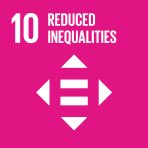-
The growing and changing middle class in Latin America: An update
- Source: CEPAL Review, Volume 2011, Issue 103, Aug 2011, p. 7 - 25
- Spanish
-
- 02 Aug 2011
- Previous Article
- Table of Contents
- Next Article
Abstract
This paper employs a two-dimensional definition of the middle class that combines the occupation of the main household income provider (manual or non-manual) with family income as a proxy for consumption. This makes it possible to explore “objective” changes in the Latin American middle class between 1990 and 2007. “Subjective” changes in class values, aspirations and identity, among other things, are also analysed. The most salient findings are the growth of the middle class in both relative and absolute terms, the increase in education across the board (overshadowed by the devaluation of its relative importance for income generation) and the declining relevance of the distinction between manual and low-level non-manual occupations as an income determinant. The heterogeneity of the middle strata is brought to light in both vertical and horizontal sections for different types of risks and levels of well-being characteristic of households in each segment.





